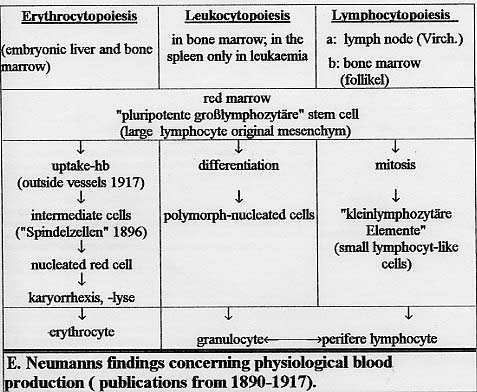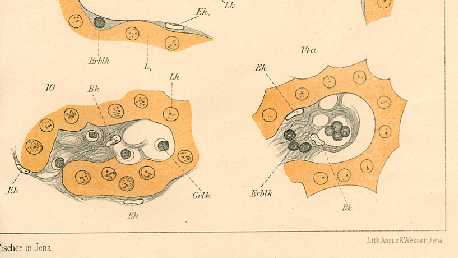 |
 |
 |
 |
 |
 |
|
In 1868 Ernst Neumann
desribed the presence of nucleated red blood cells in bone marrow sap of humans and rabbits. On the basis of this observation, he was the first to conclude that during postembryonic life,
erythropoiesis and leukopoiesis is taking place in the bone marrow. Soon, he postulated a common cell for all hematopoietic cells and called itself 1869 “lympoide Markzelle”, 1896 “großer Lymphozyt” and 1912
“großlymphozytäre Stammzelle” (great-lypmphocytic stem cell). Until his death in 1918 , he was creative in research so that additional discoveries are linked to this “Virchow of the East” , e.g.
myelogenous leukemia, law of distribution of red and yellow bone marrow . Two universities awarded him honory doctorates (1898 Tübingen, 1914 Geneva) and american scientists rediscovered
Neumann as “His Significance of Todays Hematology” (Rosenow 1967 , Wintrobe, Tavassoli), see button Cytology and Rediscovery |
|
|
|
Neumann proposed, in opposition to Paul Ehrlich, in view of his one-stem-cell-theory for all blood-cell-lines even in extrauterin life, to
create a culture esp. for this stemcell “as Robert Koch showed us colonies growing out of one bacterium”. Nobody noticed this idea (beside Pappenheim), which became such an importance for today...
Table of the history of the stem-cell, see button stem cell |
|
|
|
More details see http://www.gelehrtenfamilie-koenigsberg.net - Link to Ernst Neumann |
|
|

